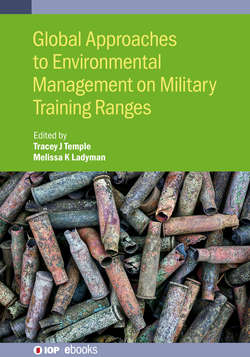Читать книгу Global Approaches to Environmental Management on Military Training Ranges - Tracey Temple - Страница 38
На сайте Литреса книга снята с продажи.
Grouping and segregation error
ОглавлениеError attributable to distributional heterogeneity, the non-uniform distribution of particles of concern in the DU and the collected samples is called a grouping and segregation error. A grouping and segregation error (GSE) is a precision error that is controlled through the collection of an adequate number of random increments to make up the sample. An increment is defined as a group of particles selected during the single operation of a sampling tool. The greater the heterogeneity of the distribution of the contaminant in the DU, the larger the GSE and the larger the number of increments that must be selected and combined for the sample. If the mass required to control the FSE could be collected one particle at a time at random, GSE would not exist. An increment may contain thousands of particles, but it is still located at only one random location within a much larger DU or sample. As more and more random increments are included in the sample, the GSE decreases.
There is no magic number of increments that will control the GSE for all sampling situations, but 60 increments is suggested as a minimum for soils containing residues of energetics at military installations. However, this is completely dependent on the degree of distributional heterogeneity of the material within the DU. Thus, there will exist materials and/or sample quality criteria where 100 or more increments are required [19, 20]. The number of increments is never based on what is easy to collect but is based on the number required to minimize the GSE where it does not impact the confidence in and the ability to legally and scientifically defend the decision. It may be appropriate to use 50 increments; however, this number must be justified.
